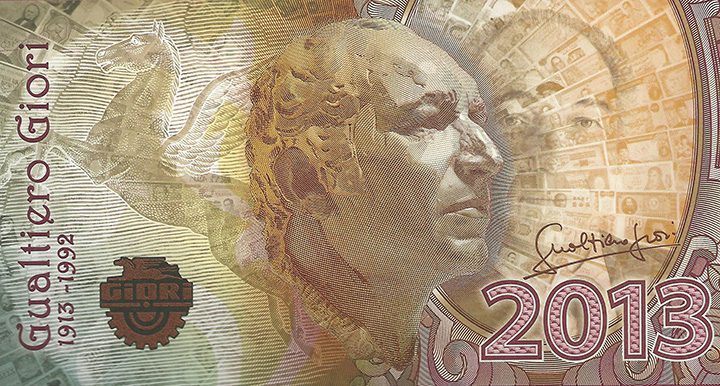printing
Gualtiero Giori was the third generation of the Coen family of security printers. In 1876 his grandfather Dino Coen purchased a small printing shop in Milan, Italy, which soon became a leading provider of security documents such as stock certificates, bonds, and checks in a newly unified Italy that needed economic growth. Dino Coen called his printing house the Officine Grafiche Coen e Compagnia, known unofficially as “C e C.”
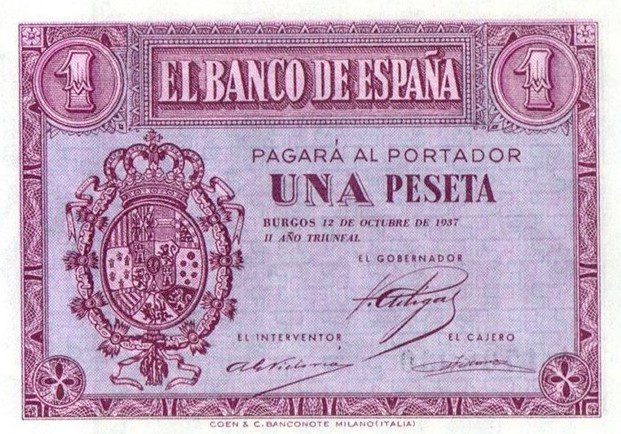
Innovating Printing Methods
In the 1930s, the Giori family acquired the exclusive rights to sell a new multicolor intaglio printing press that the Serge Beaune Society developed. Still, it was not until 1939 that the printing press received its first bank-note printing order from the Spanish government led by General Francisco Franco. At that time, the press was led by Renato and Augusto, Dino’s sons, who, faced with the advance of fascism, renamed it “Calcografía & Cartevalori,” or C&C.
The test note shown here was presented to Franco’s Spain for the use of a new 20 pesetas. This was not adopted, but C&C printed many notes for Spain.
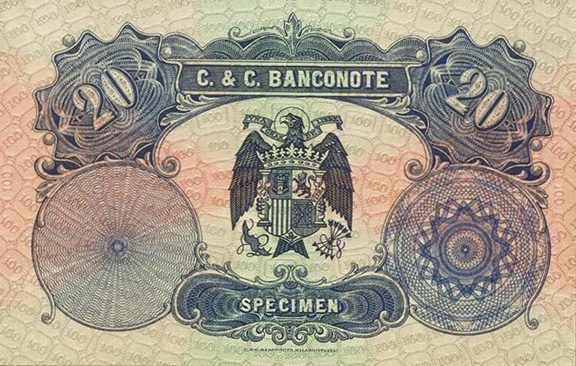
Fleeing Italy
When World War II broke out, Gualterio’s family had to flee Italy. His father had already sought new opportunities in Argentina, and the rest of the family crossed the border to Switzerland. With the rampant anti-semitism in Fascist Italy and Nazi Germany, Gualterio changed his last name from Coen and assumed his mother’s maiden name, Giori. The surname Coen exists from ancient Jewish culture. Coen is an occupational surname for a priest, and it comes from the Hebrew word kohen. Gualterio eventually joined his father in Argentina.
Giori was the first to sell the revolutionary six-color intaglio printing press in 1947. Founded in 1952, Organisation Giori became the first company in the world to design, produce, and supply machinery and specialized equipment for printing bank notes and security documents. The headquarters were established in Lausanne, Switzerland. Under Gualtiero’s guidance—and following Serge Beaune’s patents and ideas—he had a prototype of a revolutionary six-color intaglio printing press built by a company he personally knew— Fratelli Bonvini S.p.A. of Milano.
In 1952 Gualtiero Giori and Dr. Hans Bolza signed a cooperation agreement establishing a securities printing department at Koenig & Bauer in Würzburg, Germany. A five-color recto-verso dry offset printing press called SIMULTAN, known for its ability to print three back and two front colors simultaneously, debuted in 1956. Koenig & Bauer handled press engineering and manufacturing, including security and logistics systems. Organisation Giori focused on international sales and distribution, customer advice, the development of counterfeit-proof bank notes, and cross-platform process technology.
A New Partnership
In 1965 the firm De La Rue bought a 50-percent stake in the partnership and changed the company’s name to De La Rue Giori. Within a short time, the firm’s presses printed 90 percent of the world’s bank notes – a great majority of which De La Rue and Giesecke & Devrient produced.
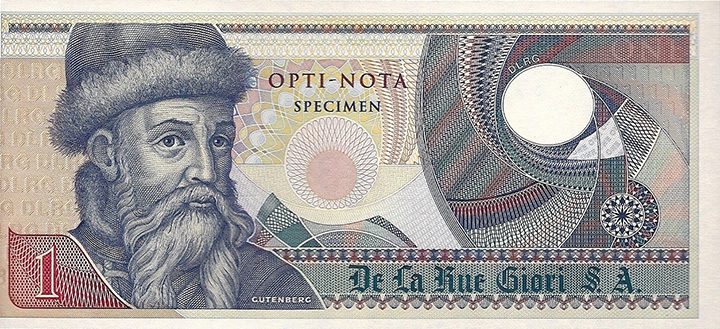
In 2001 Koenig & Bauer AG (KBA) acquired its 50-percent business partner, De La Rue Giori. KBA then renamed the firm as KBA-Giori S.A.
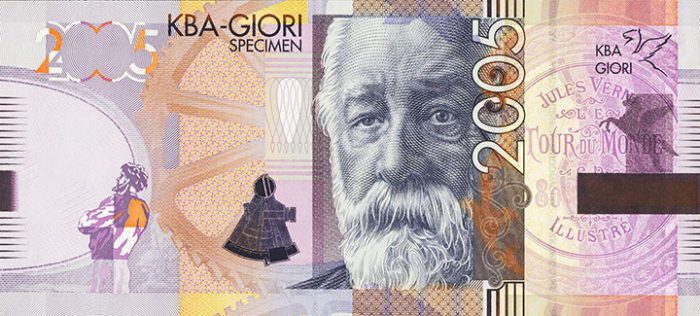
By 2011 Giori—arguably the most famous name in security printing—was no more. KBA-Giori S.A. was replaced by KBA-Notasys.
KBA-NotaSys reverted to its roots by rebranding as Koenig & Bauer Banknote Solutions as of June 1, 2020.
Gualtiero Giori died in 1992 at age 79. He did not live to see his firm sold and the name lost to history. In 2001 his son Roberto sold the firm his father built.
